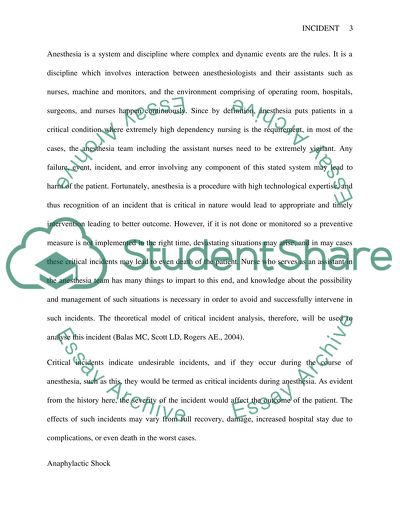Cite this document
(“Critical Incident in Anesthesia Essay Example | Topics and Well Written Essays - 2500 words”, n.d.)
Critical Incident in Anesthesia Essay Example | Topics and Well Written Essays - 2500 words. Retrieved from https://studentshare.org/health-sciences-medicine/1533620-critical-incident-in-anesthesia
Critical Incident in Anesthesia Essay Example | Topics and Well Written Essays - 2500 words. Retrieved from https://studentshare.org/health-sciences-medicine/1533620-critical-incident-in-anesthesia
(Critical Incident in Anesthesia Essay Example | Topics and Well Written Essays - 2500 Words)
Critical Incident in Anesthesia Essay Example | Topics and Well Written Essays - 2500 Words. https://studentshare.org/health-sciences-medicine/1533620-critical-incident-in-anesthesia.
Critical Incident in Anesthesia Essay Example | Topics and Well Written Essays - 2500 Words. https://studentshare.org/health-sciences-medicine/1533620-critical-incident-in-anesthesia.
“Critical Incident in Anesthesia Essay Example | Topics and Well Written Essays - 2500 Words”, n.d. https://studentshare.org/health-sciences-medicine/1533620-critical-incident-in-anesthesia.


